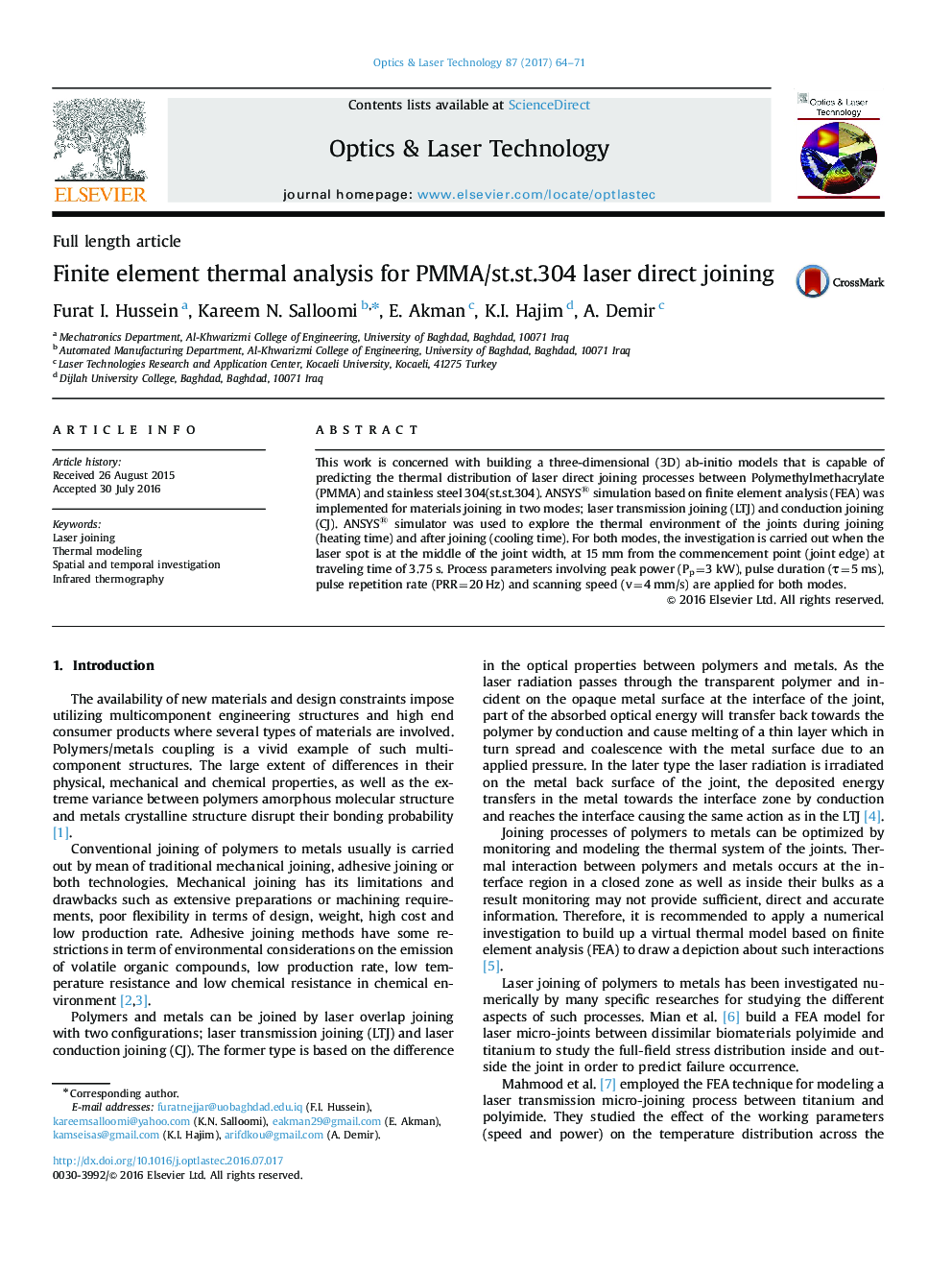| Article ID | Journal | Published Year | Pages | File Type |
|---|---|---|---|---|
| 733236 | Optics & Laser Technology | 2017 | 8 Pages |
•FEA provides possibility for predicting the thermal distribution for CJ and LTJ modes.•FEA temperature values show reasonable agreement with experimental measurements.•Absence of excessive polymer defects of dissociation and charing in such type of joining.•IR thermography images give false readings and distorted images in LTJ mode.
This work is concerned with building a three-dimensional (3D) ab-initio models that is capable of predicting the thermal distribution of laser direct joining processes between Polymethylmethacrylate (PMMA) and stainless steel 304(st.st.304). ANSYS® simulation based on finite element analysis (FEA) was implemented for materials joining in two modes; laser transmission joining (LTJ) and conduction joining (CJ). ANSYS® simulator was used to explore the thermal environment of the joints during joining (heating time) and after joining (cooling time). For both modes, the investigation is carried out when the laser spot is at the middle of the joint width, at 15 mm from the commencement point (joint edge) at traveling time of 3.75 s. Process parameters involving peak power (Pp=3 kW), pulse duration (τ=5 ms), pulse repetition rate (PRR=20 Hz) and scanning speed (v=4 mm/s) are applied for both modes.
